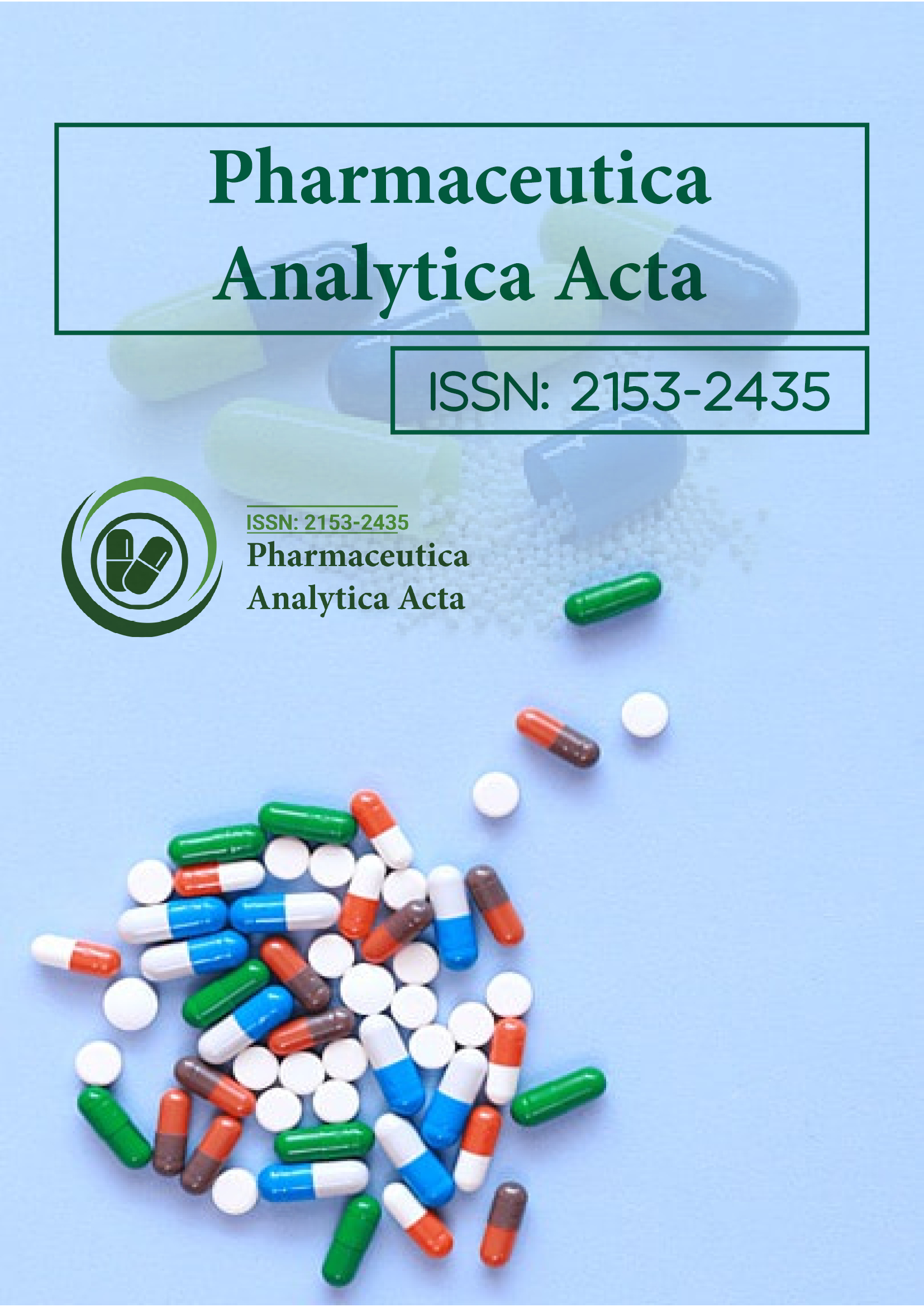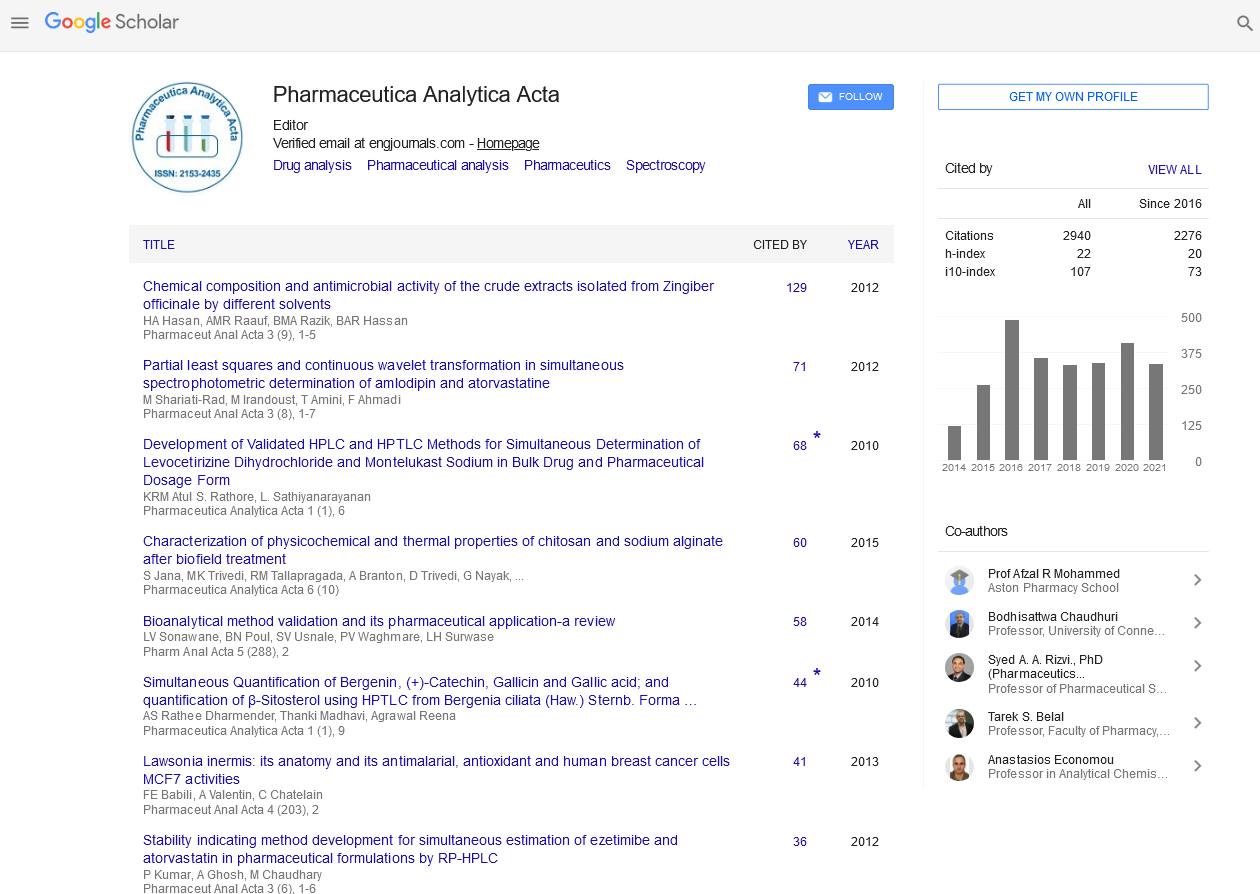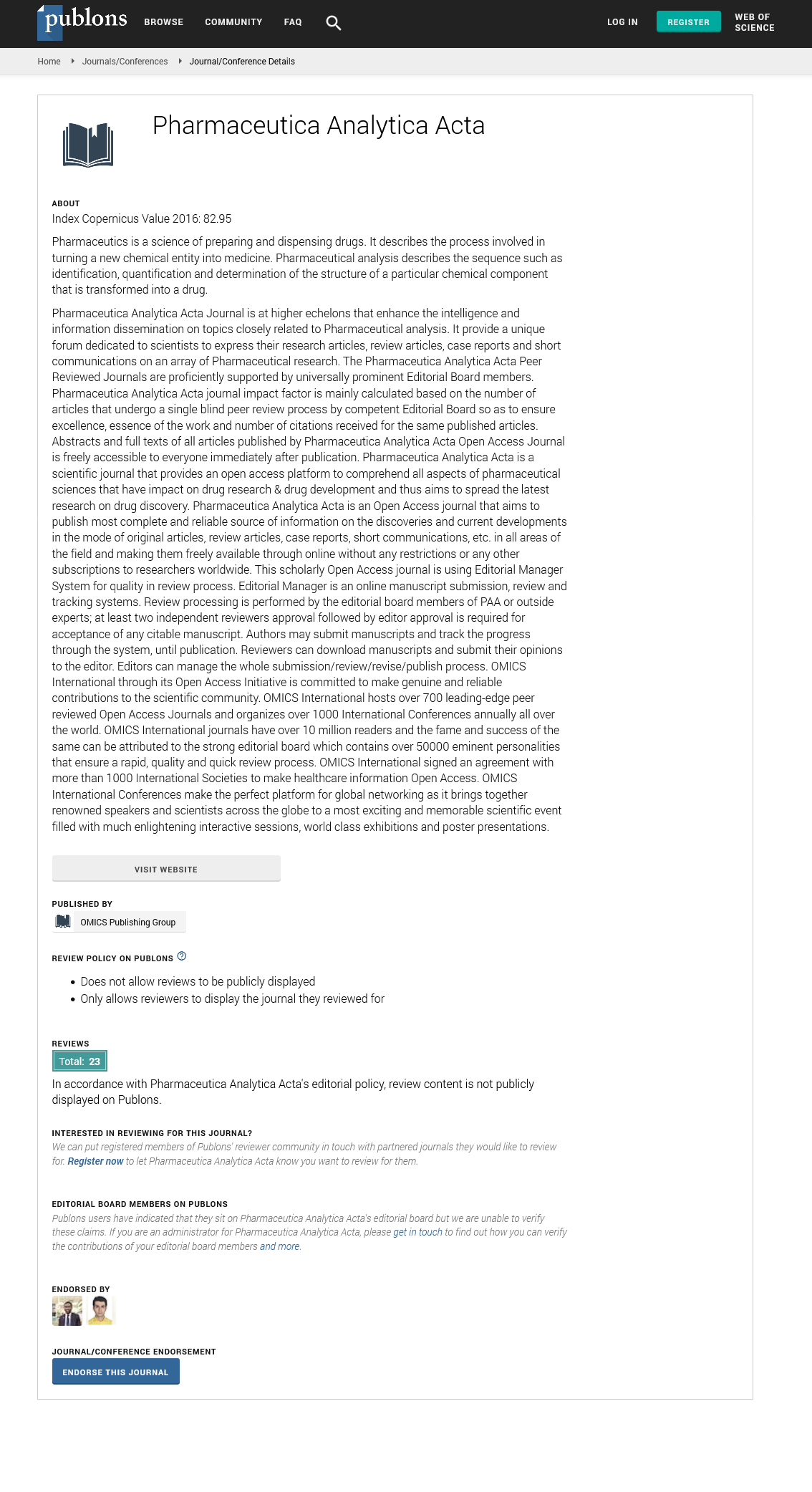Indexed In
- Open J Gate
- Genamics JournalSeek
- Academic Keys
- JournalTOCs
- The Global Impact Factor (GIF)
- China National Knowledge Infrastructure (CNKI)
- Ulrich's Periodicals Directory
- RefSeek
- Hamdard University
- EBSCO A-Z
- OCLC- WorldCat
- Publons
- Geneva Foundation for Medical Education and Research
- Euro Pub
- Google Scholar
Useful Links
Share This Page
Journal Flyer

Open Access Journals
- Agri and Aquaculture
- Biochemistry
- Bioinformatics & Systems Biology
- Business & Management
- Chemistry
- Clinical Sciences
- Engineering
- Food & Nutrition
- General Science
- Genetics & Molecular Biology
- Immunology & Microbiology
- Medical Sciences
- Neuroscience & Psychology
- Nursing & Health Care
- Pharmaceutical Sciences
Commentary - (2022) Volume 13, Issue 2
Determination, Instrumentation and Applications of High Performance Liquid Chromatography
Caglar Berkel*Received: 02-Feb-2022, Manuscript No. PAA-22-16119; Editor assigned: 04-Feb-2022, Pre QC No. PAA-22-16119 (PQ); Reviewed: 18-Feb-2022, QC No. PAA-22-16119; Revised: 21-Feb-2022, Manuscript No. PAA-22-16119 (R); Published: 28-Feb-2022, DOI: 10.4172/ 2153-2435.22.13.659
Description
High performance liquid chromatography or generally known as HPLC is a logical technique used to separate, identify or quantify each element in a mixture. The admixture is separated using the introductory principle of column chromatography and also linked and quantified by spectroscopy. HPLC is therefore principally a largely advanced form of column liquid chromatography. Rather of a detergent being allowed to drop through a column under graveness, it's forced through under high pressures of over to 400 atmospheres.
Principle of HPLC
The sanctification takes place in a separation column between a stationary and a mobile phase. The stationary phase is a grainy material with veritably small porous particles in a separation column. The mobile phase, on the other hand, is a solvent or solvent mixture which is forced at high pressure through the separation column. Via a valve with a connected sample circle, i.e. a small tube or a capillary made of stainless steel, the sample is fitted into the mobile phase inflow from the pump to the separation column using hype.
Instrumentation of HPLC
Injector
An injector is placed next to the pump. The simplest system is to use hype, and the sample is introduced to the inflow of eluent. The most extensively used injection system is grounded on slice circles. The use of the auto sampler system is also extensively used that allows repeated injections in a set listed-timing. Generates ions from a sample of the ionization source.
Column
The separation is performed inside the column. The recent columns are frequently prepared in a stainless steel casing, rather of glass columns. The quilting material generally used is silica or polymer gels compared to calcium carbonate. The eluent used for LC varies from acidic to basic detergents. Sensor Separation of analyte is performed inside the column, whereas a sensor is used to observe the attained separation. The composition of the eluent is harmonious when no analyte is present. While the presence of analyte changes the composition of the eluent. What sensor does is to measure these differences.
Recorder
The change in eluent detected by a sensor is in the form of an electronic signal, and therefore it's still not visible to our eyes. In aged days, the pen (paper)-map archivist was popularly used. Currently, a computer- grounded data processor (integrator) is more common.
Degasser
The eluent used for LC analysis may contain feasts similar as oxygen that are non-visible to our eyes. When gas is present in the eluent, this is detected as noise and causes an unstable birth. Degasser uses special polymer membrane tubing to remove feasts.
Column heater
The LC separation is frequently largely told by the column temperature. In order to gain unremarkable results, it's important to keep harmonious temperature conditions. Also for some analysis, similar as sugar and organic acid, better judgments can be attained at elevated temperatures (50 to 80 °C). Therefore columns are generally kept inside the column roaster (column heater).
Types of HPLC
1. Normal phase
Column quilting is polar (e.g. silica) and the mobile phase is non-polar. It's used for water-sensitive composites, geometric isomers, cis-trans isomers, and chiral composites.
2. Reverse phase
The column quilting is non-polar (e.g. C18), the mobile phase is water miscible detergent (e.g. methanol). It can be used for polar, non-polar, ionisable, and ionic samples.
3. Ion exchange
Column quilting contains ionic groups and the mobile phase is buffer. It's used to separate anions and cations.
4. Size Exclusion
Molecules diffuse into pores of a pervious medium and are separated according to their relative size to the severance size. Large molecules elute first and lower molecules elute latterly.
Citation: Berkel C (2022) Determination, Instrumentation and Applications of High Performance Liquid Chromatography. Pharm Anal Acta. 13:659.
Copyright: © 2022 Berkel C. This is an open-access article distributed under the terms of the Creative Commons Attribution License, which permits unrestricted use, distribution, and reproduction in any medium, provided the original author and source are credited.


